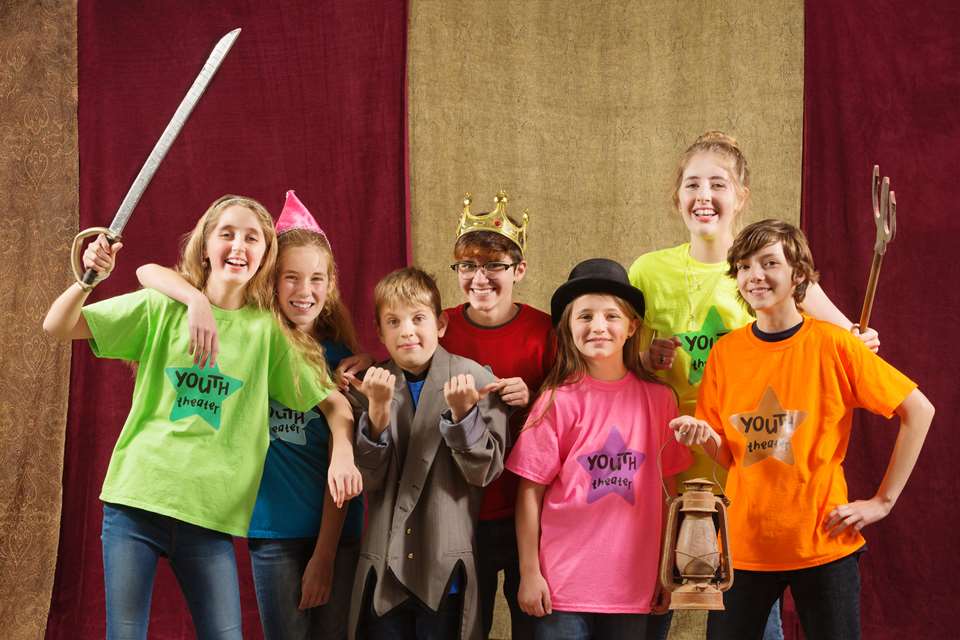One-off workshop: The Magic Paintbrush
Patrice Baldwin
Friday, March 1, 2024
Theatre education expert Patrice Baldwin outlines a workshop based on a chinease folk tale about a magic paintbrush. Follow her instructions for a brilliant workshop for KS2 and 3 students

Adobe Stock/ Baro Sanu
Summary
Chang is a poor Chinese boy who loves drawing but has no paintbrush. In a dream he is given a magic paintbrush and told to only use it to help the poor. He wakes with the paintbrush in his hand and finds discovers that whatever he paints, becomes real. He starts painting things that help the poor. A rich Emperor hears about Chang and his paintbrush and Chang is brought to his palace. The magic paintbrush won't work for the emperor, so he tells Chang to paint him a pile of gold. Chang paints the gold on a distant island, then paints a boat for the emperor to use. Once the Emperor is at sea, Chang paints a storm that sinks the boat. The emperor is never seen again. Chang continues helping the poor with his paintbrush. Preferably, don't read the story to the class before starting this lesson.
Resources:
- The story for this lesson is available on the following page. Julia Donaldson has recounted this Chinese folk tale in verse, in a picture book; Pie Corbett has written a ‘Talk for Writing’ version
- Chinese music (optional)
- A paintbrush (optional).
Learning objectives:
- To listen and respond ‘in role’, to a fictional character and situation
- To adopt and express ideas and feelings, using voice, gesture and movement
- To recount a story from different viewpoints.
Individual Mime: Ask students to get into a space as Chang and mime drawing a picture in sand with a stick. Alternatively, ask them to stay standing on the spot and stretch to draw their picture on an imaginary wall. Chinese music could be played in the background.
Talking Partners (in role): In pairs, they should describe their drawings to each other. Alternatively, ask them to give their partner instructions that enable them to replicate the drawing.
Teacher in Role/Hot-seating: You will now become Chang and the students will become the other villagers. Enter, carrying a real or imaginary paintbrush. Tell the students about your dream and how you were given the magic paintbrush. Answer their questions, then seek their advice. What do they suggest that you paint to help the poor?
Active Storytelling/Teacher as Storyteller: The class stands in a circle. Explain that they will mime whatever is happening in the story, as you are telling it. As storyteller, you can include any objects that the children suggested, that would help the poor.
Teacher in Role/Improvisation: Now you will be in role as a curious visitor, gathering information from the villagers about Chang and his magic paintbrush. Where did he get the paintbrush from? How do they know it is magic?
Rumours: Tell them that the visitor they just spoke with was a spy who has now told the emperor all about Chang and the paintbrush. Also, Chang and his paintbrush are being taken by guards to the emperor. Ask them to walk around the room, stopping and chatting sometimes, as worried villagers. You join in too, starting rumours and spreading and embellishing theirs.
Thought walk: What is Chang thinking and feeling, as he is being taken to the emperor? Ask them to walk around as Chang (holding his paintbrush) and to speak aloud what he is thinking, on his way to the palace.
Whoosh!: The class stand in a circle. You now tell (or read) to the end of the story. Explain that while telling the story, you will move along the circle, signalling in turn to individuals, pairs or groups of children to step forward and mime whatever is happening at that moment. For example, they can become the pile of gold, the boat, the storm and so on. Explain that when the acting space gets crowded, you will wave your arms from side to side and call out ‘Whoosh!’ repeatedly. This signals, ‘return to the edge of the circle’. You can then continue telling the story with them stepping forward and re-enacting in turn, until the story ends.
Improvisation (pairs): Years later. One child is ‘Old Chang’ and the other a visitor listening to him explain how he was given the brush, how he got rid of the emperor and how he still helps the poor. Afterwards, Chang answers questions.
Talking Objects: The children swop roles but this time, the paintbrush tells the story and then answers questions.
The Magic Paintbrush: A Chinese folk tale
Many years ago, in a faraway country called China, there lived a young man called Chang. Chang was poor and kind. He was also very good at drawing. He drew pictures every day. Sometimes he just drew what he saw around him. Sometimes he drew pictures that came from his imagination. Chang could not afford to buy pencils or paintbrushes or paper. He used sticks instead of pencils. He drew pictures on the ground and on walls, in mud and in sand.
One night, Chang was dreaming wonderful pictures, when an old man appeared in his dream. The old man looked straight into Chang's eyes and smiled. Then he put a paintbrush into Chang's hand. ‘Take this paintbrush, Chang,’ he whispered. ‘It is a magic paintbrush. You must only use it to help the poor. Never use it to help rich people’. Then the old man suddenly vanished. When Chang awoke, he found that there really was a paintbrush in his hand, and he knew that he had been given a very special gift.
Chang soon discovered that whatever he painted with this paintbrush, would become real. He painted a bird and it flew into the sky, singing. He painted blossom and it danced in the breeze. He painted food and the hungry people came to eat. Chang listened to the stories of poor people and he found ways to help them with his magic paintbrush. He painted clean water for people who were thirsty and food for those that were hungry. He painted homes for those who needed shelter. Soon stories of Chang's kindness spread throughout the land.
One day, a wicked and greedy Emperor heard about Chang's magic paintbrush. ‘Bring Chang to me,’ he told his guards. ‘And make sure he brings his magic paintbrush with him. I will make him paint many things for me.’
The guards brought Chang to the Emperor's palace. He stood before the powerful Emperor, holding the paintbrush tight in his small hand. The emperor grinned and snatched the brush from Chang. He started to paint a mountain of gold but the magic would not work for the Emperor. The gold mountain stayed inside the picture. The paintbrush was only magic if Chang was painting with it. This made the greedy Emperor very angry. He threw the brush at Chang and shouted, ‘Paint me a huge mountain of gold and then I will set you free.’ Chang picked up the brush with a trembling hand. He painted a mountain of gold, on an island far away, and across the sea.
The rich man said, ‘I am going to get the gold from that island. Draw a boat for me NOW.’ The young man quickly drew a boat. The emperor quickly got into the boat and set off to get the gold. When the boat was in the middle of the sea, Chang starting painting lots of big waves. The waves became higher and higher, stronger and stronger, and then one huge wave crashed down and sank the boat. The boat went down, down, down to the bottom of the sea and the greedy emperor was never seen again.
Chang still uses his magic paintbrush. He still paints things to help poor people because that is what the old man in his dream asked him to do.



